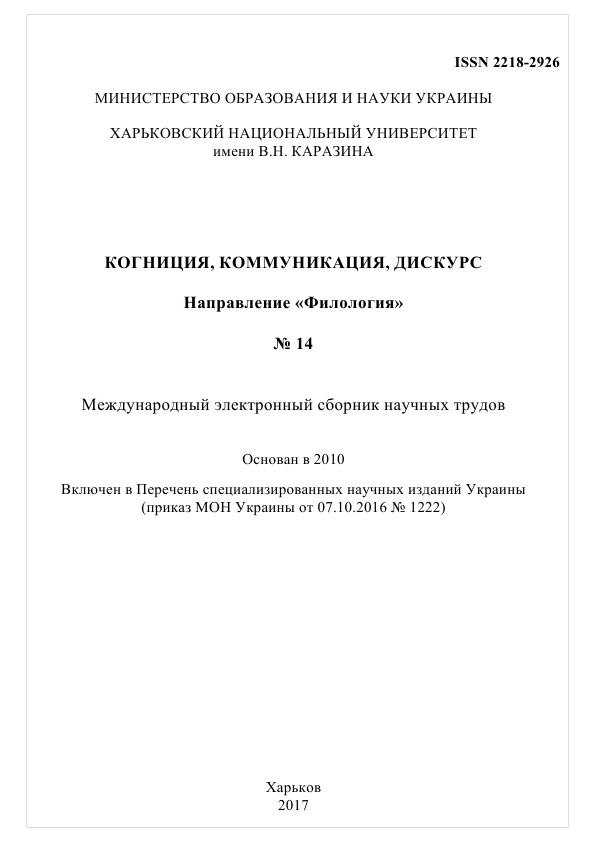Fact and fiction in Ray Bradbury’s Fahrenheit 451
Abstract
Science fiction is a literary genre based on imaginative fiction and postulated scientific discoveries, the intersection of the world of science fiction and the world of reality. It makes people think about the future of the world and plays an important role in the predictions of a highly technologized world, society and their problems. A number of authors have been involved in technological predictions, a famous American writer Ray Bradbury among them, with his science fiction novel Fahrenheit 451 (1953). In this article my purpose will be to focus on the ontological juxtaposition of factitiousness and fictitiousness in science fiction literature in general and in the abovementioned novel in particular, concerning myself with bringing out the linguistic and stylistic properties of Bradbury’s novel in terms of literal and figurative language through the linguostylistic method of analysis. Moreover, I will also concentrate on certain cognitive notions and strategies that condition the factual aspect of the novel and contribute to the creation of an environment of cognitive estrangement and finally disclose the cognitive frameworks, resources, meanings, as well as the figurative language of the novel.
Downloads
References
Bradbury, R.D. (1953). Fahrenheit 451. NY: Random House.
Critical Essays: Ray Bradbury's Fiction. Available from: http://www.cliffsnotes.com/literature /f/fahrenheit-451/critical-essays/ray-bradburys-fiction
Fauconnier, G., & Sweetser, E. (1996). Spaces, Worlds, and Grammar. Chicago: University of Chicago Press.
Gasparyan, S.K. (2008). Lingvopoetika obraznogo sravneniya [Lingvistic poetics of figurative comparison]. Yerevan: Lusakn Publ.
Gernsback, H. (1926). Introduction. In: Gernsback, H. (Ed.). Amazing Stories (pp. 5–11). New York: Experimenter Publishing.
Johnson, M. (1987). The Body in the Mind. The Bodily Basis of Meaning, Reason and Imagination. Chicago: Chicago University Press.
Lakoff, G., & Johnson, M. (1999). Philosophy in the Flesh. The Embodied Mind and Its Challenge to Western Thought. New York: Basic Books.
Muradian, G.H. (2013). Metaphoric Blending in Science Fiction. Kalbu Studijos. Studies About Languages, 22, 198–204.
Prochnow, A. (2013). Presentations. Available from: https://prezi.com/r1ptinlslvag/fahrenheit-451/
Scholes, R. (1975). Structural Fabulation: An Essay on Fiction of the Future. Bloomington: Indiana University Press.
Suvin, D. (1979). Metamorphoses of Science Fiction. New Haven, Ct: Yale University Press.
Talk: Ray Bradbury (2014). Available from: https://en.wikiquote.org/wiki/Talk:Ray_Bradbury.
Westfahl, G. (2005). The Greenwood Encyclopedia of Science Fiction and Fantasy. Westport, Ct.: Greenwood Press.
Authors, who publish with this journal, accept the following conditions:
The authors reserve the copyright of their work and transfer to the journal the right of the first publication of this work under the terms of the Creative Commons Attribution License (CC BY), which allows other persons to freely distribute a published work with mandatory reference to the authors of the original work and the first publication of the work in this journal.
Authors have the right to enter into separate additional agreements for the non-exclusive dissemination of the work in the form in which it was published by this journal (for example, to post the work in the electronic institutions' repository or to publish as part of a monograph), provided that the link to the first publication of the work in this journal is given.
The journal policy allows and encourages the authors to place the manuscripts on the Internet (for example, in the institutions' repositories or on personal websites), both before the presentation of this manuscript to the editorial board and during review procedure, as it contributes to the creation of productive scientific discussion and positively affects the efficiency and dynamics of citing the published work (see The Effect of Open Access).




